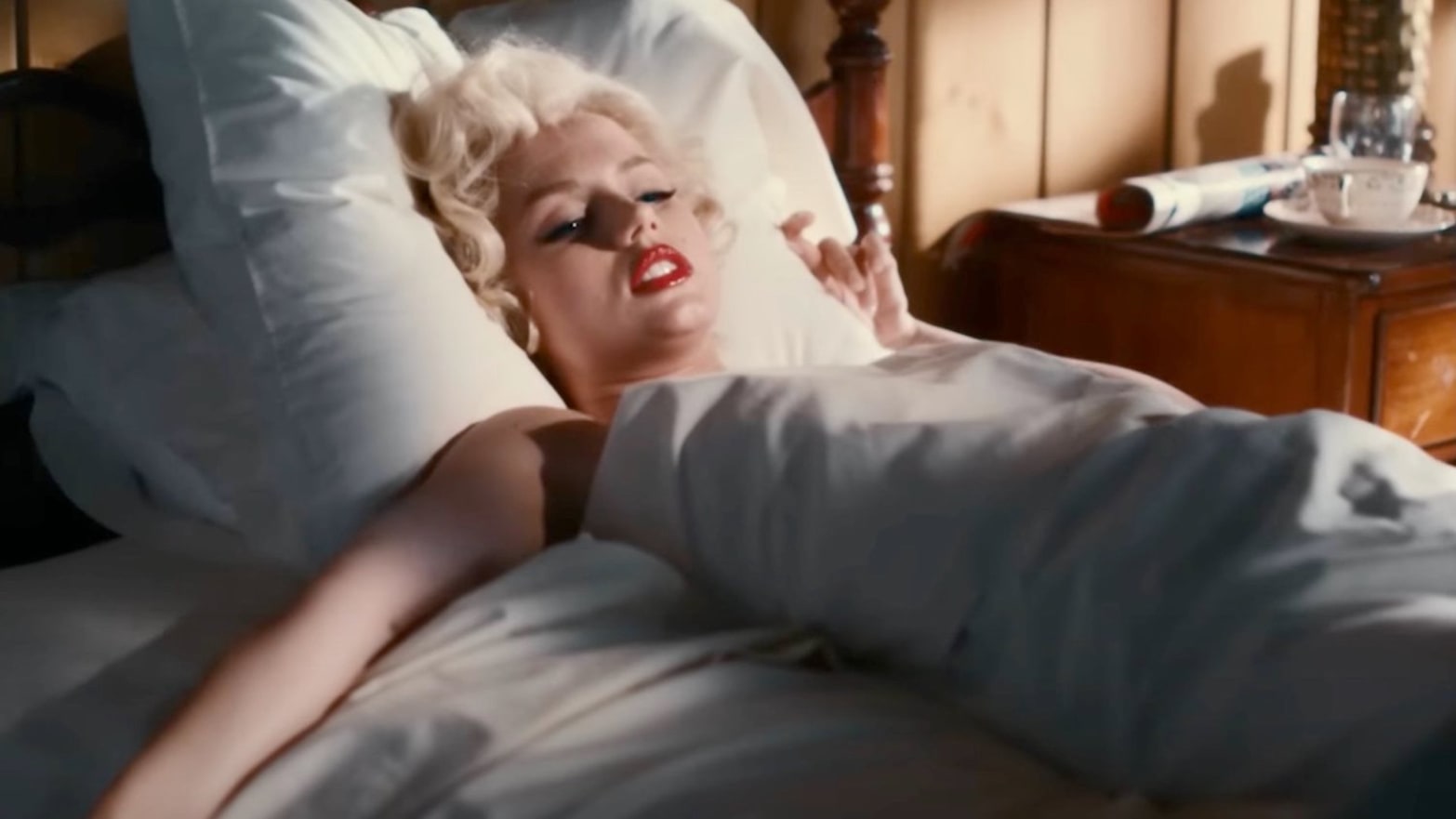By Amelia Winn ’25
Managing Editor
“There’s something in it to offend everyone,” Andrew Dominik proudly claimed when asked about the critiques of his wildly incendiary film, Blonde. With a 42% on Rotten Tomatoes and armed with arthouse film aesthetics, Dominik has induced an outcry in response to its inaccuracies about the life of Norma Jeane Mortenson, or Marilyn Monroe, as she is better known. This response specifically surrounds the depiction of her relationships with men, and the ensuing exposition of her reproductive and sexual life. Any hope I had that it was going to serve as a justified critique of the abusive, exploitative, and gendered Hollywood culture that surrounded Monroe disappeared minutes into watching the film. Instead, the film starts with a highly-dramaticized exposition of her fatherless childhood and relationship with a mentally ill mother. The fever-dream-like quality of the warping shots and uneasy music functions as nothing more than a gimmick to disturb the audience. After a substantial time jump, bridged by a montage of magazine covers to the tune of crooning lyrics, “every baby needs a da-da-daddy to keep her worry-free,” the objective of the film became all too clear. A morbid fascination with recreating the abuse Monroe underwent — informed by a fictional novel about her — appears to be the driving force behind this movie, and spectators can do nothing but become complicit in the public fascination with the sexualized narrative of her life.
The film begs to be critiqued, and many have answered the call, myself included. Instead of being left with food for thought, or a deeper understanding of Monroe’s life, I was left questioning what Dominik actually achieved in his depictions of sexual, mental, and physical trauma — particularly in the highly aestheticized way he chose to do so — all while using the name and life of a real person as his medium.
In an interview published by the LA Times, Dominik claimed he did not seek to highlight the life or achievements of Marilyn Monroe. Rather, he posits, “It’s about a person who is going to be killing themself…so it’s trying to imagine the reasons why they did that.” The incredibly graphic sex and sexual assault scenes, colored by their embellished cinematography and editing, are not meant to offer a critique of Hollywood’s sexual exploitation of women. Rather, they serve as a spectacle for the audience. The film does little to display Monroe’s character, instead focusing on her sexual reputation.
If Dominik sought to investigate fictionalized circumstances of a person’s life that ultimately result in a tragic death by drug overdose, why use a real person’s face and legacy — particularly if he actively did not want to engage with Monroe’s story in any way beyond the abuses she faced? In the film, he reduces her life and image to a vessel through which he can aestheticize the various tragedies of misogyny many women face. Aside from the film’s appalling depictions of abuse, I don’t see how it served Dominik to use Monroe as the central figure of the film, as opposed to a fully fictional character. The film’s one-dimensional portrayal of her is devoid of nuance, only focusing on Monroe’s role as a sex symbol with “daddy issues.”
Beyond the misguided intent behind making this film, I struggle to find the justification for its execution. On one hand, Dominik’s creation does not serve an audience of women or individuals who have experienced any kind of sexual trauma. The scenes of sexual violence do little to shield the audience from the graphic nature of the events, while focusing more on aesthetic shots of Monroe’s body than the perpetrators or the crime itself.
If Domonik sought to critique a culture that condones sexual abuse in Hollywood the excessive indulgence in hazy, beautiful cinematography paired with disorienting music negates any productive “rawness” which would serve as a teaching moment for an audience who might not understand the dangers of such a culture. The film’s fatal flaw is Dominik’s glamorization of the same culture he aims to critique.
A few scenes of violence stand out in particular as deeply insensitive to Monroe’s legacy, one of which is the films disturbing depiction of a forced abortion. Its contents are insensitive, given the ongoing and very real danger to women’s reproductive autonomy and the reality of sexual violence many women experience. The graphic elements of this film serve to do nothing more than traumatize certain audiences and fulfill a sick fantasy for the rest. These sensitive topics are handled so brashly that any pretense of artistry created in the aesthetic effects of the film is ruined.
Why would an artistic depiction of the brutalization of women be needed? What does it teach, and to whom? All I took from this movie was that there is a worrying trend of misogyny and abuse in the supposed art that claims to critique it. If a film traumatizes certain audiences in its callous handling of such pervasive abuse, while appealing to viewers with the same mindset as Dominik, the future of cinema is bleak.
Blonde is not art, but rather a co-opting of it. It is a male sexual fantasy of violence disguised as a movie. Its creation was not benign, with contents specifically created to induce a heated reaction, as evidenced by Dominik’s interviews. It is nothing more than an alarmingly-indulgent depiction of violence without any kind of critical examination of the structures and cultures which enabled these atrocities to happen to a real person.
Blonde represents a perversion of the biopic as an art form, as well as Marilyn Monroe’s career and personal life. Her suffering is reduced to the “reasons why she killed herself” without a focus on her resilient spirit or her accomplishments. Dominik seems to take a distinctly repulsive pleasure in turning her into a figure he can brutalize under the pretense of creating art without understanding her as a real person. While Monroe’s brutalization is extensively depicted, her strength and her will to survive, despite suffering a lifetime of abuse, are ignored in the film. We are left among the remains of her legacy, wondering just how different today’s cultural consciousness is from that of decades before.



